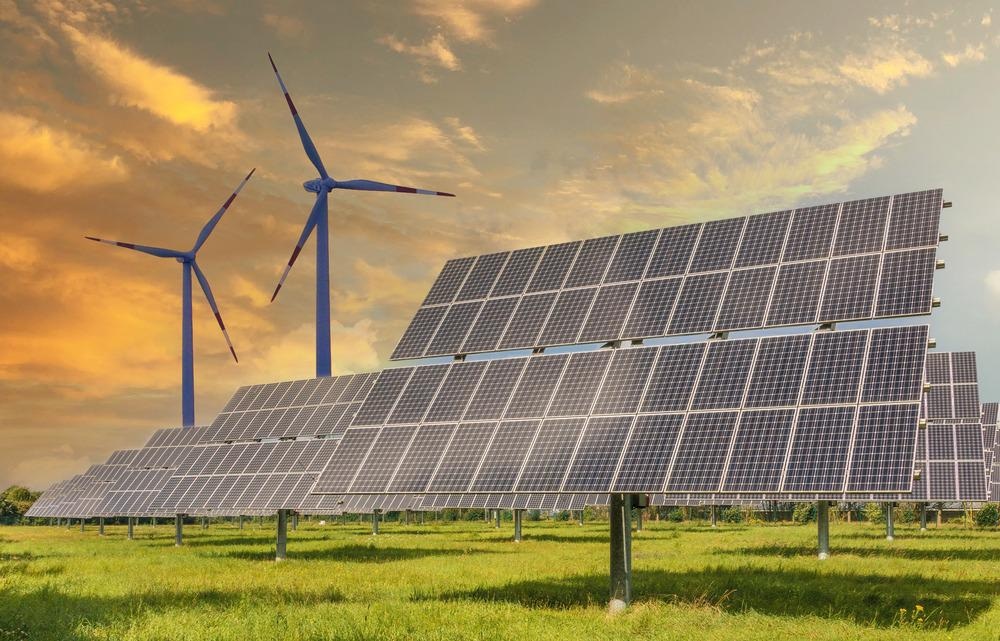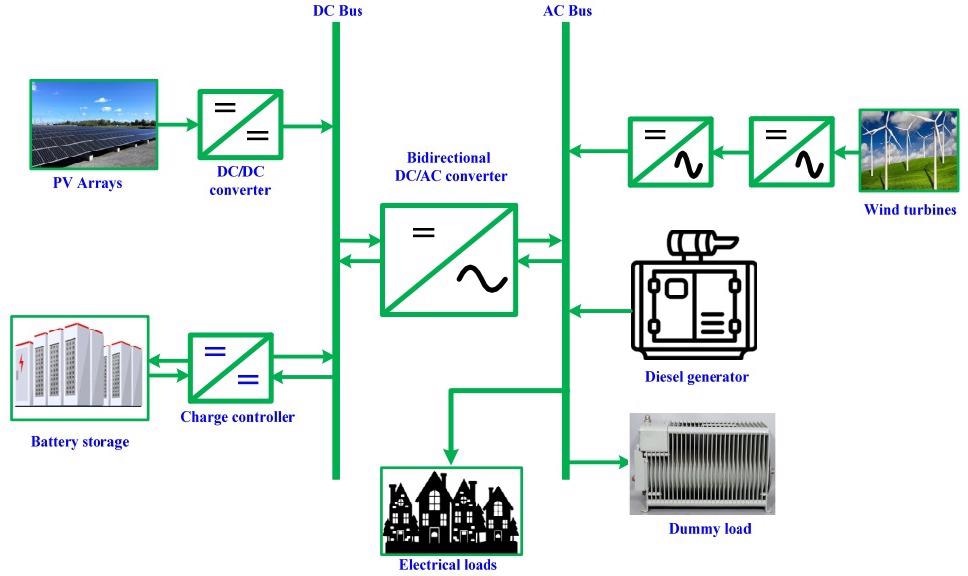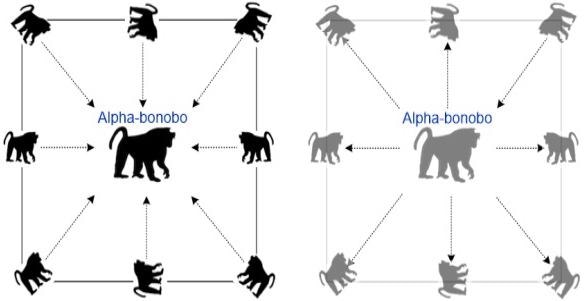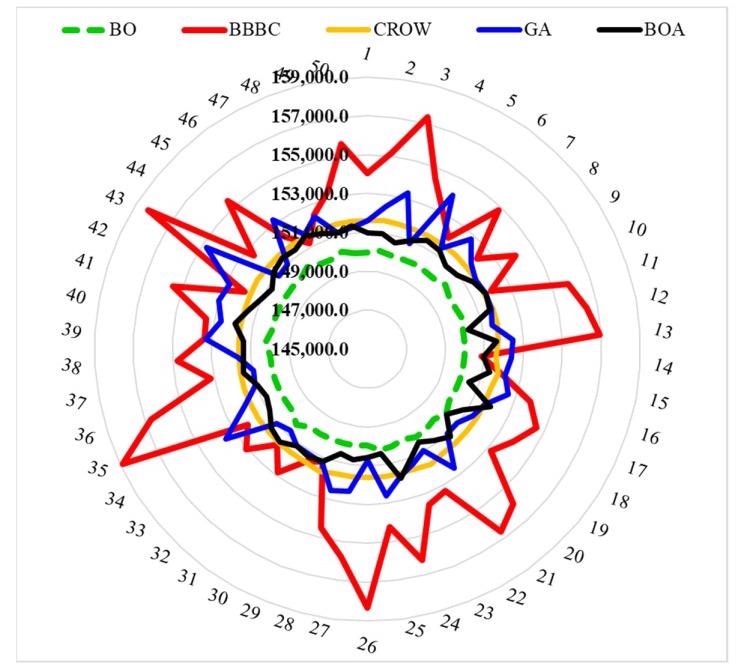Optimizing renewable energy for off-grid generation and storage is a key area of renewable energy research. Writing in the journal Sustainability, a team of researchers has developed a novel bonobo optimizer technique for optimizing an off-grid hybrid renewable energy system.

Study: Technical and Economic Evaluation for Off-Grid Hybrid Renewable Energy System Using Novel Bonobo Optimizer. Image Credit: Mr. Kosal/Shutterstock.com
Hybrid Renewable Energy Systems
Renewable energy is a vital element of the drive toward net-zero carbon emissions and mitigating the effects of climate change. Renewable sources are inexhaustible, making them more economically sound than now-renewable fossil fuels in the long term. Solar, wind, hydroelectric, geothermal, and biomass have all been utilized in renewable power generation and storage systems.

The hybrid renewable energy system (HRES) under study. Image Credit: Fahr, H.M.H et al., Sustainability
Wind and solar energy have been extensively explored due to reductions in manufacturing costs and growing commercial and industrial applications. Renewable energy systems can be used to power remote locations, but the scaling and reliability issues, providing power to off-grid locations can be challenging when using single-source systems. Hybrid renewable energy systems have been proposed to address this challenge.
A hybrid system contains elements such as photovoltaic solar cells, wind turbines, diesel generators, fuel cells. Problems arise, however, when they are used to power off-grid locations due to the random and non-linear operation of renewable sources. Reduced reliability, less available energy, sizing and design considerations, and increased control complexity are among the challenges that systems face. Optimization of these systems is a paramount concern amongst engineers and scientists working in the field.
Optimizing Hybrid Renewable Energy Systems
Numerous optimization algorithms have been employed by studies to investigate the optimal sizing and operational parameters of hybrid systems. These include traditional algorithms, soft computing (AI) algorithms, software tools, and hybrid algorithms. Traditional algorithms include probabilistic, graphical, and analytical algorithms. Whilst traditional techniques are simple, defining the optimization problem requires certain requirements.
Amongst these requirements, graphical algorithms rely on factors such as wind speed and solar irradiance to determine the optimal sizing of hybrid systems. This leads to issues with under- or over-sizing. Analytical algorithms are not able to deal with many resources and take more computational time than soft-computing algorithms. Conversely, techniques such as hybrid algorithms, soft-computing algorithms, and software tools do not have specific requirements, which enables them to solve optimization problems more effectively.
The potential for hybrid renewable energy systems to provide efficient off-grid electricity generation and storage has motivated researchers to explore the economic and technical feasibility of these systems. In the current literature, there are a plethora of studies exploring optimization techniques.

Movement directions of bonobos in pp (dark forms) and np (light forms) with higher probabilities. Image Credit: Fahr, H.M.H et al., Sustainability
HOMER PRO, a software tool, has been used in the techno-economic analysis of a hybrid system used to electrify a village in Pakistan, revealing that the localized cost of electricity was more economical on-grid compared to off-grid. Additionally, HOMER PRO was used to optimize, re-design, and re-finance a hybrid system on an island in Thailand. Another study was carried out to optimize a hybrid renewable energy system in Benin, reporting that the hybrid system attained the lowest optimal cost.
Other studies have used various optimization approaches including fuzzy logic, genetic algorithms, Pareto evolutionary algorithms, differential evolution algorithms incorporated with fuzzy logic, amongst other techniques. Studies have employed single objective mathematical models and multi-objective mathematical models.
A review of current literature reveals that metaheuristic algorithms are especially effective at overcoming the optimization problems associated with the design of hybrid renewable energy systems compared to graphical and analytical algorithms. Optimizing the size of a hybrid system is vital because over-sizing increases costs and under-sizing reduces shared power system reliability.
The Study
Based on the data from a comprehensive literature review, the authors behind the research published in Sustainability have proposed a novel bonobo optimization algorithm to optimize the off-grid performance of hybrid renewable energy systems. The algorithm was applied to a proposed off-grid hybrid system in Al Sulaymaniyah, a northern urban area in Saudi Arabia, which will utilize photovoltaic cells, wind turbines, batteries, and diesel generators.
To validate the soundness and performance of the proposed optimization algorithm, it was compared to four other metaheuristic algorithms: the butterfly optimization algorithm, genetic algorithm, crow search, and the big-bang-big-crunch algorithm. The algorithm was validated in terms of convergence rate, mean, standard deviation, optimal and worst solutions, and oscillations around the system’s steady state.

The ASC versus run number using BO compared to the other four metaheuristic techniques. Image Credit: Fahr, H.M.H et al., Sustainability
The aim was to optimize the system in terms of minimizing annual costs and enhancing the reliability of the system. The results of the study demonstrated that the bonobo algorithm performed supremely compared to the other four metaheuristic algorithms, attaining the optimal design with the minimum annualized service cost of $149.977.2 USD, quick convergence time, and fewer oscillations, followed by the butterfly oscillation algorithm. The other algorithms evaluated failed to capture the global solution and performed poorly all-around.
The novel algorithm proposed by the authors was demonstrated to be robust and efficient, paving the way for future research and optimization of hybrid renewable energy systems for the electrification off-grid areas that typically suffer from issues with reliable energy supplies.
Further Reading
Fahr, H.M.H et al. (2022) Technical and Economic Evaluation for Off-Grid Hybrid Renewable Energy System Using Novel Bonobo Optimizer [online] Sustainability 14(3) 1533 | mdpi.com. Available at: https://www.mdpi.com/2071-1050/14/3/1533
Disclaimer: The views expressed here are those of the author expressed in their private capacity and do not necessarily represent the views of AZoM.com Limited T/A AZoNetwork the owner and operator of this website. This disclaimer forms part of the Terms and conditions of use of this website.